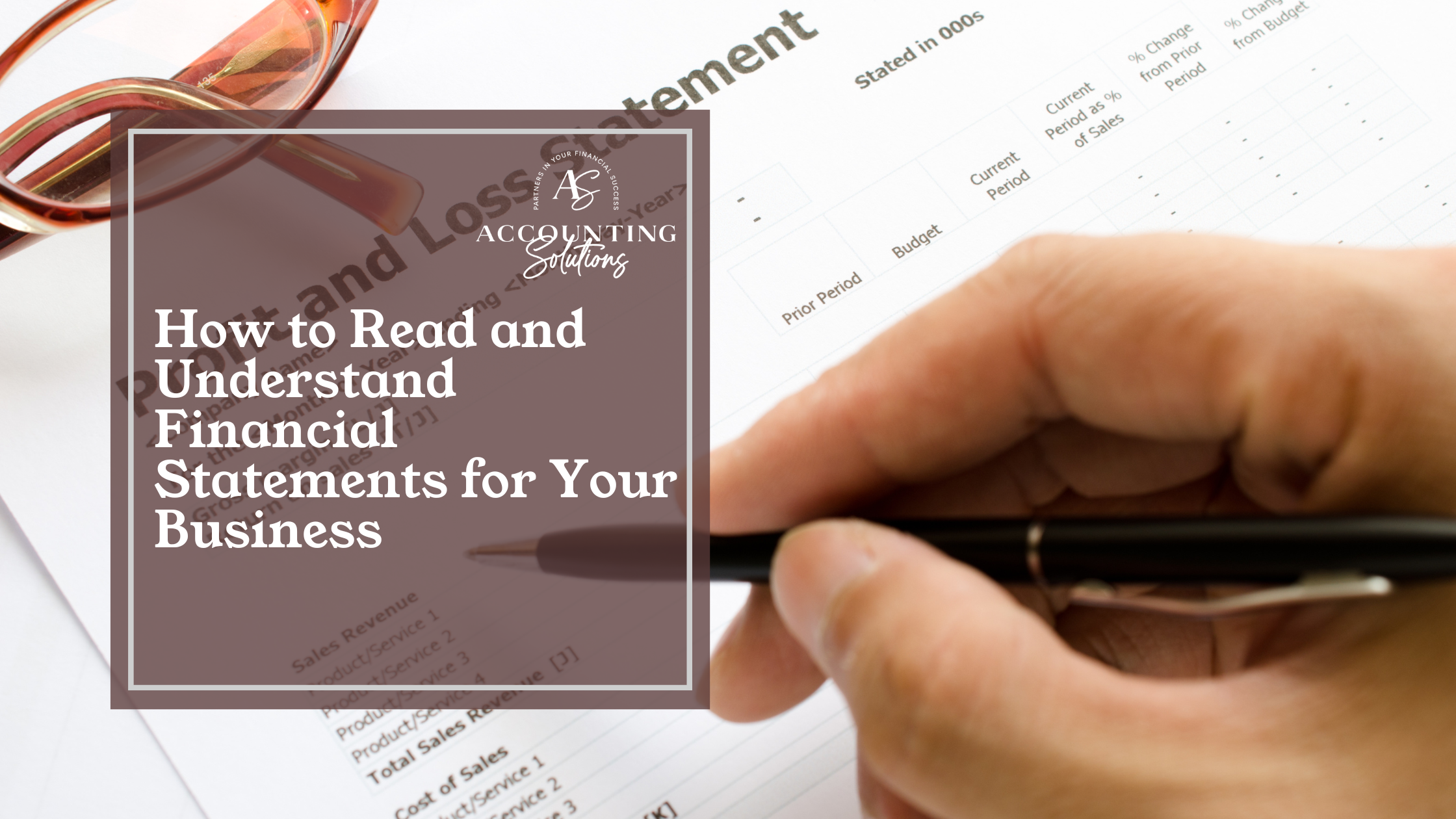How to Read and Understand Financial Statements for Your Business
As a small business owner, understanding your financial statements is essential to making informed decisions and ensuring long-term success. You need to know two of the most critical financial statements: the Profit and Loss Statement (P&L) and the Balance Sheet. Let's break down these statements to help you better understand them and use them to assess your business's financial health.
Profit and Loss Statement (P&L): Understanding Your Business Performance
The Profit and Loss Statement (also called an Income Statement) summarizes your revenues, expenses, and net profit over a specific period (monthly, quarterly, or annually). It helps you understand whether your business is profitable and where you can improve efficiency.
Key Components of a P&L Statement:
Revenue (Sales): The total income generated from selling your products or services.
Cost of Goods Sold (COGS): The direct costs associated with producing your products or delivering services.
Gross Profit: Revenue minus COGS. This represents how much you make after covering production costs.
Operating Expenses: Includes rent, utilities, payroll, marketing, and administrative costs.
Net Profit (or Net Loss): Gross profit minus operating expenses. If this number is positive, your business is profitable; if negative, you're operating at a loss
How to Use a P&L Statement to Make Decisions:
Identify areas where expenses can be reduced.
Analyze revenue trends to predict future income.
Assess profitability and adjust pricing strategies if necessary.
Balance Sheet: Understanding Your Business's Financial Position
The Balance Sheet provides a snapshot of your business's financial health at a specific point in time. It helps you understand what your business owns (assets), what it owes (liabilities), and your overall equity.
Key Components of a Balance Sheet:
Assets: Everything your business owns, such as cash, inventory, equipment, and accounts receivable (money owed to you by customers).
Liabilities: What your business owes, including loans, credit card balances, and accounts payable (money you owe to vendors).
Owner's Equity: The value left after liabilities are subtracted from assets. This represents your business's net worth.
How to Use a Balance Sheet to Make Decisions:
Determine if your business has enough assets to cover its liabilities.
Monitor cash flow and ensure you have sufficient funds to operate.
Evaluate how much debt your business carries relative to assets.
How These Statements Work Together
The Profit and Loss Statement tells you if your business is making money.
The Balance Sheet shows your financial standing and whether you have the resources to stay in business long-term.
Comparing both helps you identify financial risks, investment opportunities, and areas to improve profitability.
Now that you're familiar with your financial statements, make it a habit to review them consistently. If you have any questions or need insights, reach out to our team. By staying proactive, you can drive your business towards success and growth. Contact us today to make the most of your financial data!

